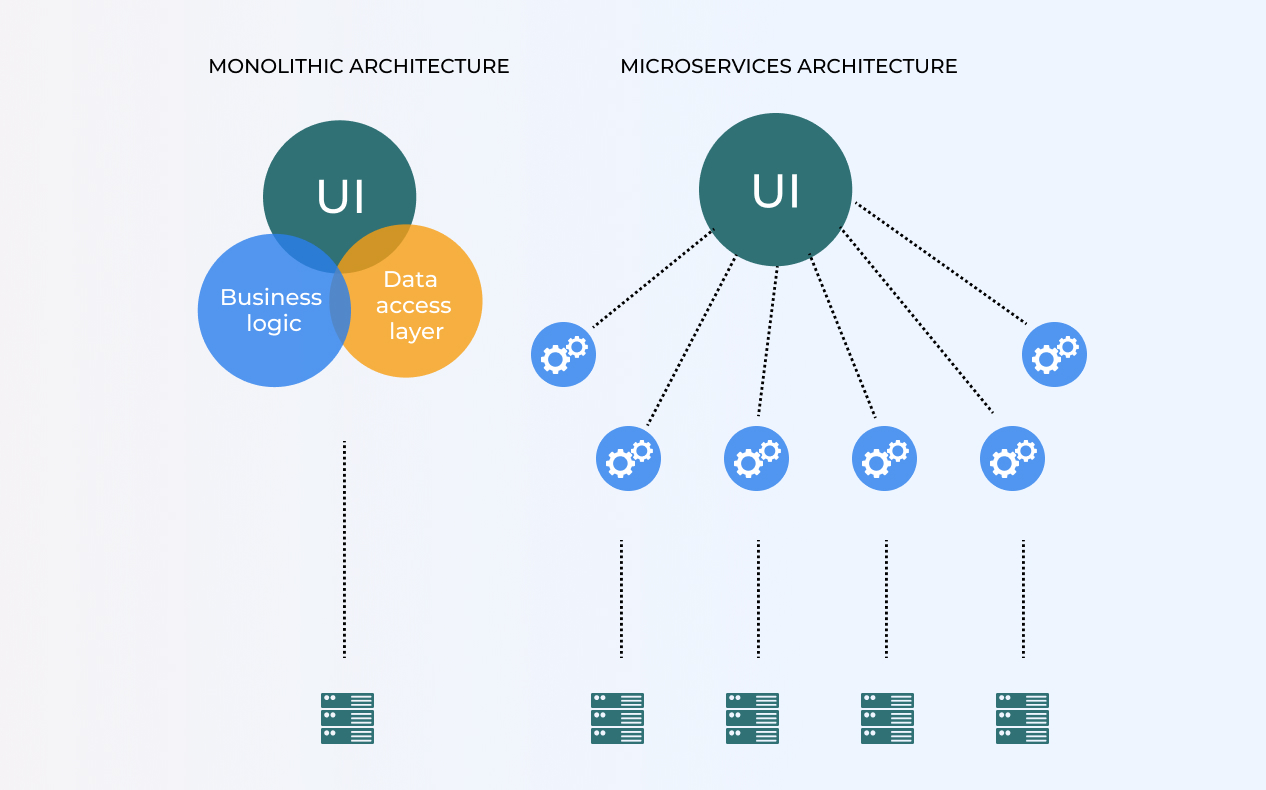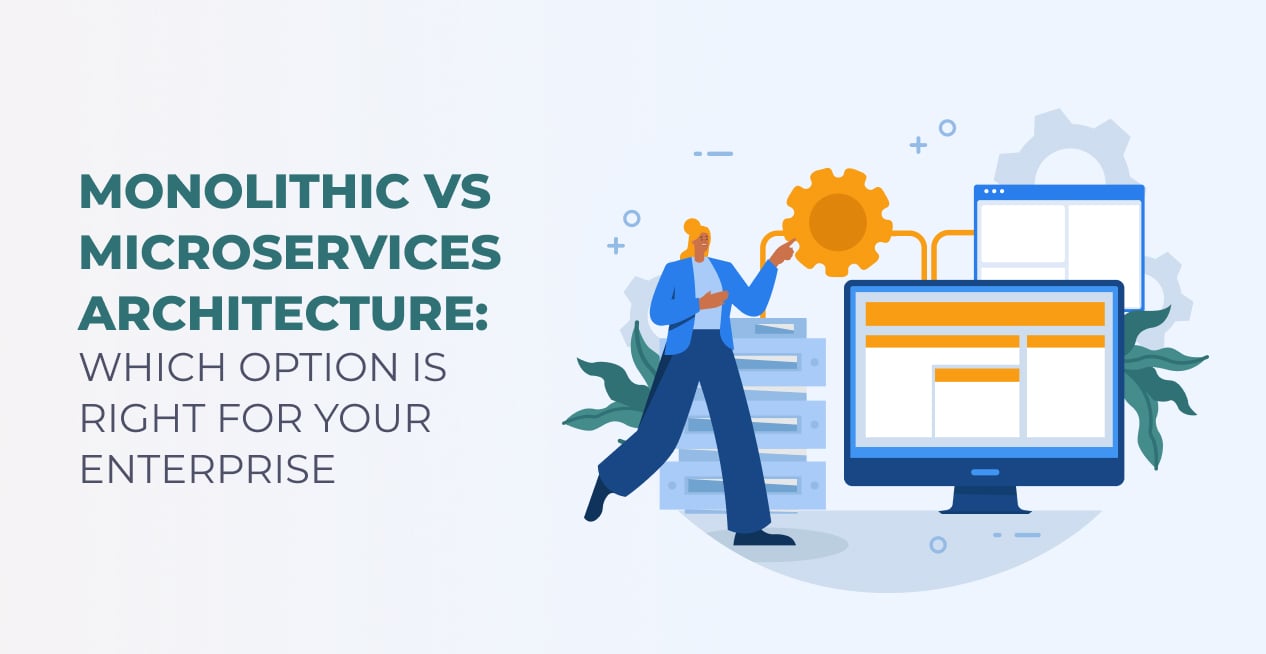Introduction
Ask any software developer and they will tell you that markets will be taken over by Microservices very soon. Microservices architecture of software is all the rage for its adaptability and ease of maintenance. In 2014, Uber, the popular cab hailing service provider made a major switch in their app architecture by switching from monolithic architecture to micro services architecture. What difference did this make and why Uber decided to take this decision? Let us have a look at the case study of a company who was one of the first companies to switch from monolithic architecture to microservices architecture.
During its initial years Uber’s software infrastructure required only limited features such as connecting drivers to customers, billing processes, and payment gateways. It was also dedicated to providing a single service in just one city, Francisco. These were the reasons that Uber was initially built as a monolithic application. It could handle basic requirements and support fundamental features while offering a clean codebase.
However, it soon incurred troubles when the company tried to scale up the application to accommodate its growing number of users and features the customers expected. A clean simple codebase meant that everything had to be deployed all at once and thus deterring continuous integration. Also, the changes made to the system was unnecessarily a time and effort consuming project.
To deal with these setbacks, the company soon decided to disintegrate its only monolithic database into a set of cohesive codebases to form a service-oriented architecture. This meant that different services were delivered individually and its components, managed and written in its own language. In layman’s terms, it adopted Microservices architecture. Before we venture into the need of adopting microservices architecture, let us have a look at both monolithic and Microservices architecture along with their advantages and disadvantages.
What is Monolithic Service Architecture ?
Monolithic architecture refers to the developmental style of software architecture in which a software is designed as a single entity, a self contained unit. In this developmental architecture of a software, the entire app is created as a single module within which its components and functionalities are interlinked together. These components include user interface, logic fields, data access protocols, etc and they run together within a single process.
Advantages of Monolithic Service Architecture
Monolithic service architecture comes with many benefits. Here are a few such advantages that have been observed with monolithic applications:
1. Simplicity
Monolithic approach is often simpler compared to fragmented and disconnected systems since it does not require constant communication with out of bound components and is run as a single entity.
2. Performance
Monolithic architectures are known to have less latency and better capacity to take higher loads.
3. Easier Debugging
Removing errors from a monolithic application is convenient as all its components are in one place.
Challenges of monolithic architecture
Although Monolithic architecture is very beneficial for enterprises, they come with their set of limitations such as:
- Scalability is a major concern with a monolithic application. This is because an entire application needs to be scaled up even if it is just a single component.
- Maintainability of monolithic architecture is quite complex as making changes or updates to a specific component can result in due changes to other parts of the component.
- Limited Technology Stack: In a monolithic architecture, the same technology stack is used by all the components. This makes the application inflexible when it comes to adopting new technologies and framework for different components.
As observed in Uber, when organizations grow in complexity, monolithic architectures become less suitable and functional compared to alternative architectures like microservices or serverless architectures. These become solutions to the disadvantaged monolithic architecture face.
What is Microservices Architecture?
Microservices Architecture is an architectural and organizational approach to software development in which software is composed of small independent services that communicate with each other via well written Application Programming Interface (APIs) and lightweight protocols like HTTP or messaging systems. These services are managed by small-contained teams. This particular feature makes it easier for applications to scale up quickly and come to market very quickly. These loosely coupled and independently deployable services are independent of each other and maintained individually.
In this architecture, ever since the start of development, an application is divided into a set of services, each responsible for a specific business capability that cater to different functions.
Each microservice in a Microservices Architecture is developed, deployed, and scaled independently of the others. They are typically organized around specific business domains or functionalities, and each service can be developed using different technologies, programming languages, or frameworks, depending on the specific requirements.
Advantages of Microservices Architecture include:
1. Scalability
Microservices architecture allows single components to be scaled independently as required. This means that to change a single component one need not change the entire resource utilization and the ability to handle high loads efficiently.
2. Agility and Flexibility
Microservices enable faster development and deployment cycles as each service can be developed and released independently. This allows teams to work on different services simultaneously, making it easier to adopt new technologies and respond to changing business requirements.
3. Easy Error detection and rectification
Since microservices are loosely coupled, a failure in one service does not necessarily impact the entire application. Failures are isolated to specific services, making it easier to identify and fix issues.
4. Team Autonomy
Microservices promote smaller, cross-functional teams that can take full ownership of individual services. Each team can choose the most suitable technology stack and make independent decisions regarding their service.
Challenges of Microservices Architecture
1. Distributed System Complexity
Microservices introduce the complexity of building and managing distributed systems. Communication between services must be carefully designed, and additional effort is required to handle issues such as network latency, service discovery, and fault tolerance.
2. Operational Overhead
With multiple services to manage, operational tasks such as monitoring, logging, and deployment become more complex and require additional tooling and automation.
3. Data Management
Maintaining data consistency across multiple services can be challenging. Different approaches, such as distributed transactions or eventual consistency, must be considered based on specific requirements.
Microservices Architecture is well-suited for complex and scalable applications, especially those that require frequent updates, involve multiple teams, or have different components with varying scalability requirements.
Differences: Monolithic Architecture Vs. Microservices Architecture
One can easily get confused between the two types of architecture. The following table can help distinguish between the two.
| Monolithic Architecture | Microservices Architecture |
| Easy Deployment | Complex Deployment |
| No code reusability | Paramount code reusability |
| Updating the process is a tedious process | Updated service can be redeployed |
| Does not require expert domain knowledge | Requires a lot of technical expertise |
| Consists of a single codebase with multiple modules within | Package of independent services based on one functionality |

Why should complex applications be built using microservices architecture?
These days, Microservices architecture is a popular approach for building complex applications, and it offers several benefits that make it suitable for such scenarios. Here are some reasons why complex applications should be built using microservices architecture:
1. Scalability
Microservices architecture allows applications to scale easily as its individual services can be scaled separately. This allows developers to allocate resources proficiently and scale up only the services that require it instead of scaling the entire application. Better performance and cost optimization are automatically guaranteed for complex applications with varying workloads.
2. Modularity
An added feature of Microservices is modularity. Modularity in an application refers to its ability of breaking down a complex application into smaller, cohesive, loosely bound services. Each one of these services is dedicated to a single function making it easier to develop, test, and maintain. This advantage of microservice also enables teams to work on various different services, facilitating faster development and deployment cycles.
3. Adaptable to numerous technologies
With Microservices architecture, one can easily integrate different technologies and programming languages separately into various services as per their requirements. This enables the developers to get the best-suited technology stack for each service. It also makes it easier to upgrade existing ones without impacting the entire application.
4. Continuous Delivery
As mentioned earlier, modularity along with decoupling of services enable continuous delivery practices, wherein one can incorporate new features or debug frequently, while being time efficient and user friendly.
5. Reusability
Microservices can be designed to be reusable components that can be used across different applications. One can also create a library of services.
Even though switching to microservices infrastructure is extremely beneficial for a business, they also come with their own set of challenges as discussed above. However, when executed properly, the advantages of microservices outweigh its challenges, thus making it a reliable approach for building complex applications.
Conclusion
Microservices architecture in development is the future of development. From businesses to developers, everyone is preferring Microservices architecture over traditional monolithic architecture. Microservices development is being considered as a more reliable, time and cost efficient infrastructure when it comes to app development.
Frequently Asked Questions
Should I start with a microservice or a monolith?
In today’s day and age one should definitely opt for a microservice architecture for a software as it is more accessible, easy to maintain and helps build superior IT products that can be easily scaled.
Do microservice require containers/Docker?
Microservices architecture does not require Dockers and containers. However, most developers prefer using them for their convenience.
Do microservices require a specific technology stack?
A microservice can be developed by any technology stack programming language, database, etc). It just needs to understand its functionality instead of being required to take a more standardized, one-size-fits-all approach.
Is monolithic architecture faster than microservices?
A large, monolithic application is known to slow down development. On the other hand, a simple development like microservices is known for time efficiency.









